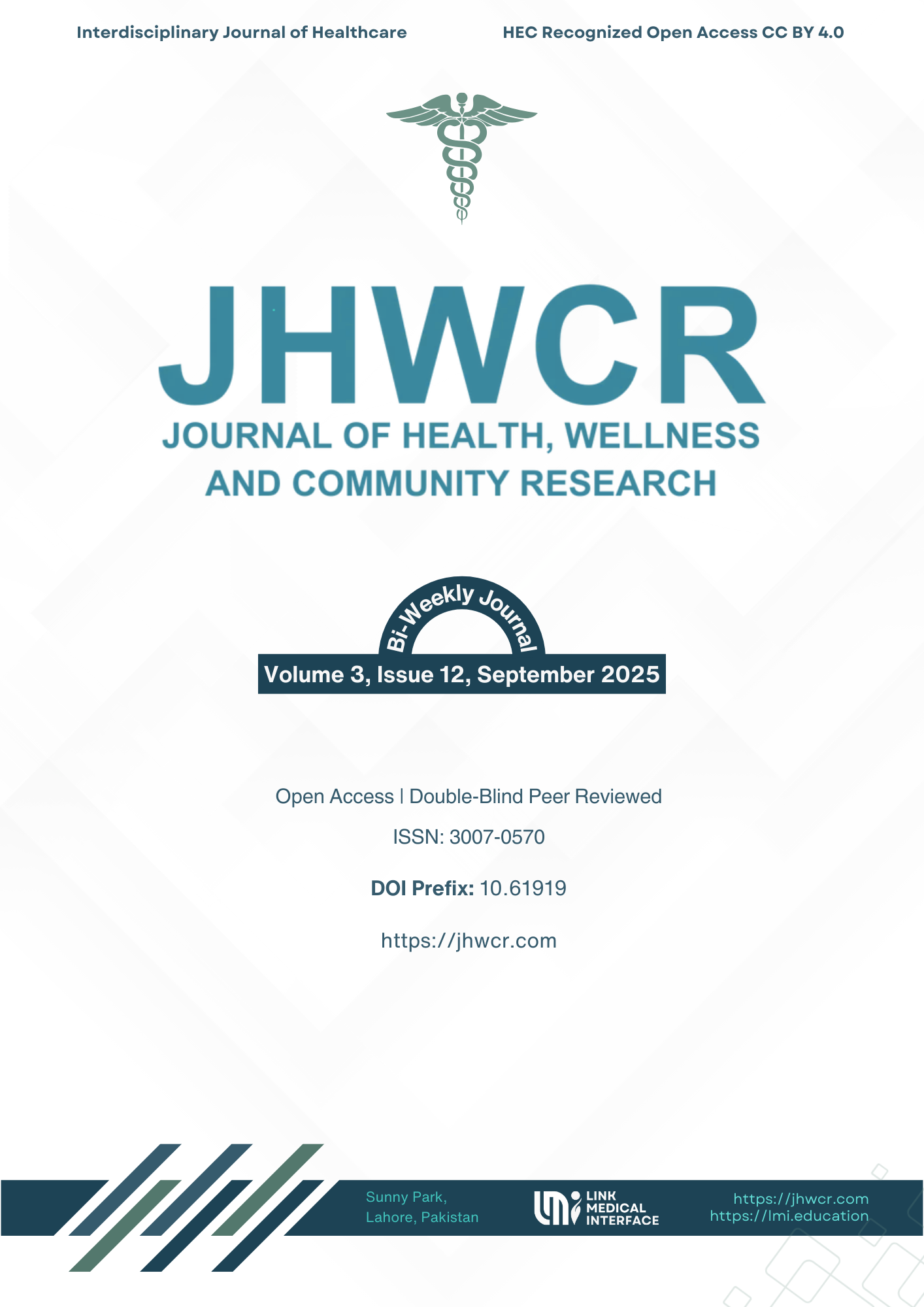Serum Estradiol and Progesterone Profiles in Obese Women with Irregular Versus Regular Menstrual Cycles: A Hospital-Based Case–Control Study from Sialkot
DOI:
https://doi.org/10.61919/74tfer51Keywords:
obesity, estradiol, progesterone, menstrual irregularity, luteal insufficiency, reproductive endocrinology, case–control studyAbstract
Background: Obesity is a well-established risk factor for reproductive dysfunction, often disrupting the balance between estradiol and progesterone that regulates normal menstrual cyclicity. Elevated estradiol through aromatization in adipose tissue and inadequate luteal progesterone production may jointly contribute to irregular cycles and infertility in obese women, but comparative evidence remains limited in South Asian populations. Objective: This study aimed to investigate serum estradiol and progesterone profiles in obese women with irregular versus regular menstrual cycles and evaluate their diagnostic performance in predicting menstrual dysfunction. Methods: A hospital-based case–control study was conducted among 80 obese women aged 18–45 years, recruited from tertiary facilities in Sialkot, Pakistan. Cases were defined as women with self-reported irregular cycles (n=40), while controls had regular cycles (n=40). Clinical data, anthropometry, and fasting blood samples were obtained. Estradiol (E2) and progesterone (P4) levels were quantified, and analyses included descriptive statistics, t-tests, logistic regression adjusted for confounders, and receiver operating characteristic (ROC) curves. Results: Women with irregular cycles exhibited significantly higher mean estradiol (148.6 ± 117.2 vs 89.0 ± 62.1 pg/mL, p=0.005) and lower progesterone (2.3 ± 6.1 vs 6.9 ± 11.4 ng/mL, p=0.03). Low progesterone (<1 ng/mL) was more prevalent among irregular cases (60% vs 25%, RR 2.4, p=0.002). Estradiol quartile analysis showed a dose–response association with irregularity (p-trend=0.004), while higher progesterone quartiles were protective (p-trend=0.002). ROC analysis yielded AUCs of 0.77 for estradiol and 0.84 for progesterone. Conclusion: Obese women with irregular cycles demonstrate a distinct hormonal signature of estrogen excess and luteal inadequacy. Routine dual profiling of estradiol and progesterone may enhance early detection of menstrual dysfunction and guide targeted interventions to restore cycle regularity and protect reproductive health.
Downloads
Published
Issue
Section
License
Copyright (c) 2025 Anam Ziarat, Saima Ashraf, Asad Shabbir, Nadia Nazish, Muhammad Awais, Ayesha Ijaz (Author)

This work is licensed under a Creative Commons Attribution 4.0 International License.


